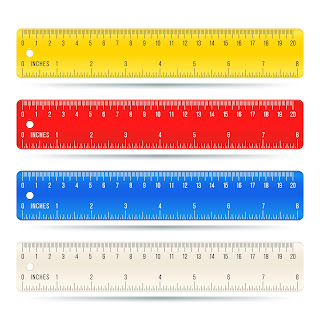Geometrical tools in details and it uses
Geometric tools are the basic implements that help you to deal with geometrical shapes and also ease out complex problems associated with them. In fields as diverse as Mathematics, Engineering, Architecture and Designing, geometric shapes and figures play an integral part in construction, measurement or even analysis. The following article provides information about some of the most common geometric tools along with their uses.
1. Ruler
A long, flat ruler with units of length marked along one edge.
USES:
- Measuring distances and lengths.
- Drawing straight lines and line segments.
A compass is an instrument used for navigation and orientation that shows direction relative to the geographic "cardinal directions", or "points".
A tool with 2 arms, one of the arms have a sharp point and the other arm may be able to hold a pencil/pen.
Use:
- Drawing circles and arcs.
- Transferring distances from one part of a drawing to another.
- Making geometric shapes such as triangle and, polygons.
3. Protractor
A semicircular or circular instrument with degree markings.
- Measuring in degrees.
- Drawing to a given measurement.
- Checking angle measurements in geometric constructions.
4. Set Square (or Triangle)
- Description: A triangular shaped instrument with right angles and marked angles of 30°, 45° or 60°.
Perpendicular means "at right angles". A line meeting another at a right angle, or 90° is said to be perpendicular.
- Creating specific angles (30°, 45°, or 60° for example).
- Building geometric shapes and angles.
5. Divider
-Description: A tool with two pointed ends used for marking or measuring.
- Uses:
- Measuring distances on a drawing or map.
- Measuring off.
- Dividing a given line into equal parts.
6. Straight Edge
- Description: A ruler or strip of wood or metal without measurement markings.
- Uses:
- Drawing straight lines.
- Helping in geometric constructions where precise straightness is required.
7. Caliper
- Description: A two-legged instrument, both legs being movable for measuring the distance between two opposite sides of something.
- Uses:
- The measurement of internal and external dimensions on a workpiece.
- For comparisons in dimensions and size.
- Accurate measurement in engineering and manufacturing.
8. T-Square
- Description: An instrument consisting of a long straight edge perpendicular to a shorter straight arm.
- Uses:
- Drawing horizontal and vertical lines in a drawing board.
- Ensuring alignment and squareness in technical drawings.
- Constructing accurate drawings in architectural and engineering design.
9. Drafting Machine
- Description: A combined tool with a protractor and a set square mounted on a rotating arm.
- Uses:
- Drawing and measuring of accurate angles and lines.
- Construction of complicated technical drawings and plans.
- Allows accurate scaling for drawing and drafting in engineering and architecture.
10. Graph Paper
- Description: Paper that has been printed on in a fine grid of squares or lines
- Uses:
- Allows plotting points and graphing.
- Allows drawing geometric figures accurately.
- Aids in coordinate geometry and spatial design.
11. Drawing Templates
- Description: Stencil containing a variety of geometric shapes and symbols
- Uses:
- Drawing standardized shapes and symbols quickly.
- Assist in drawing and designing technically.
- Ensures the continuity and accuracy of the geometric pattern.
12. Angle Finder
- Definition: It is the tool used to measure the angle between two surfaces or lines.
- Uses:
- Measuring and Setting Accurate Angles.
- Ensures that the drawing of angles in construction and machining is appropriately done.
- Checks the measurement of angles made in geometric problems.
Application of Geometric Tools:
- Mathematics: solving geometrical problems, constructing figures through proof of theorems.
- Engineering: Designing and analyzing the component making the blueprint and ensuring that the construction is accurately done.
- Architecture: Preparing the building plans, layout designs, and visually interpreting the results.
- Art and Design: Making geometrical patterns, maintaining symmetry, and doing accurate artwork.
- Education: Teaching geometry concepts, performing experiments with hands, and illustrating math principles.
These instruments ensure precision and accuracy in geometric constructions and measurements, which are basic to most practical and theoretical works.













